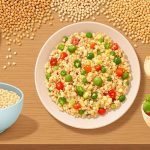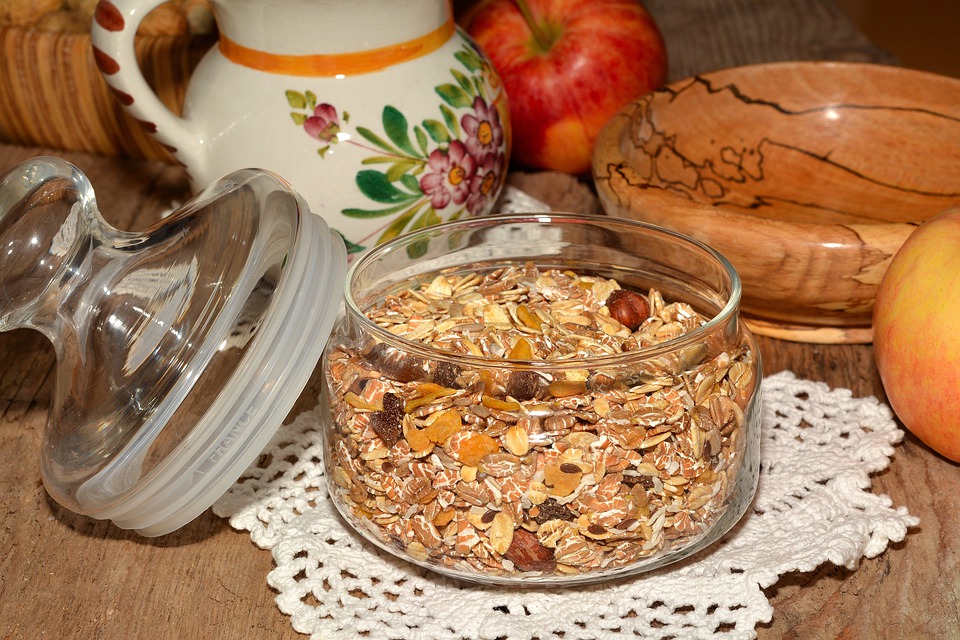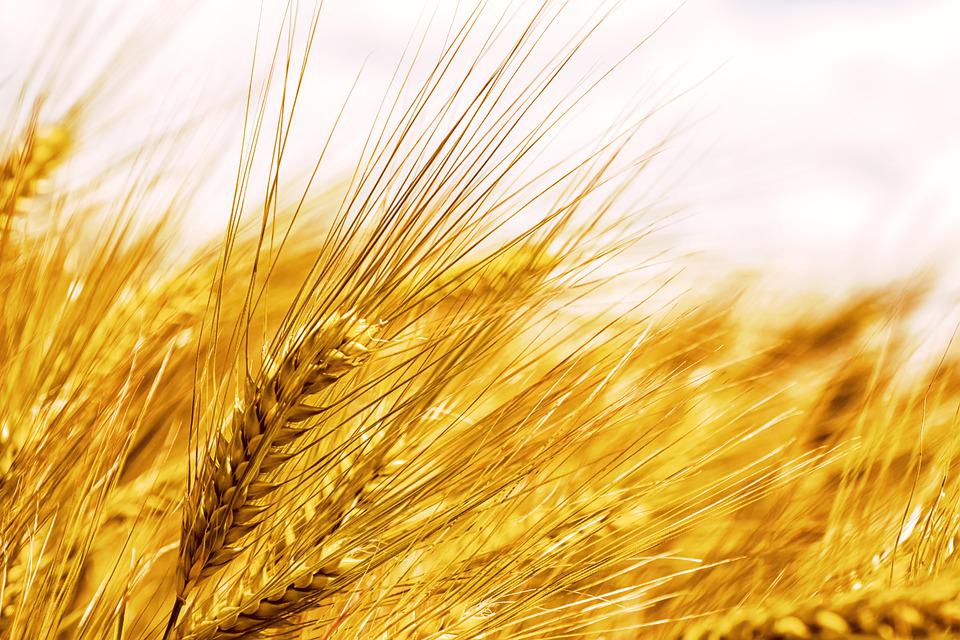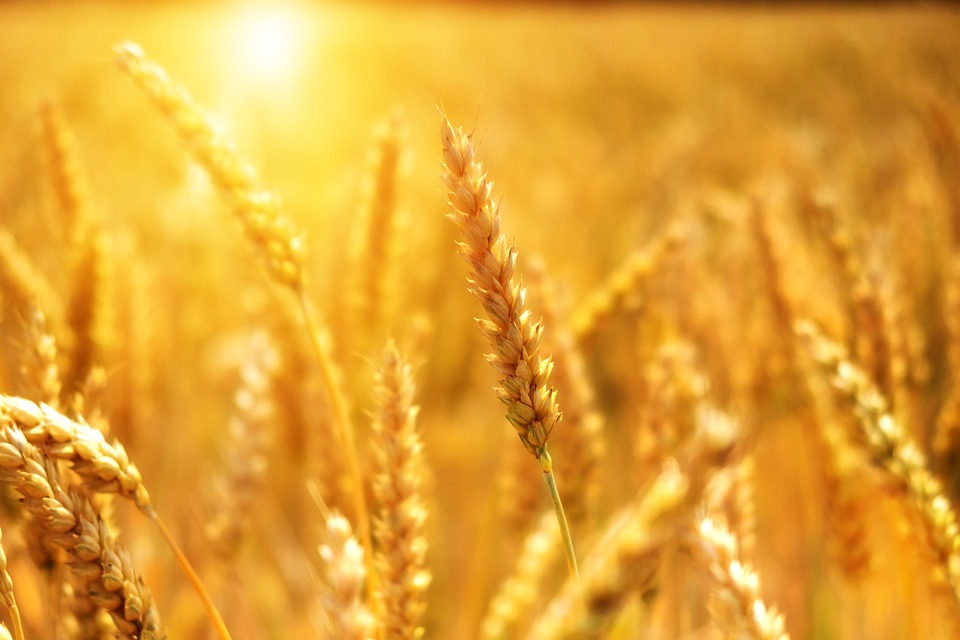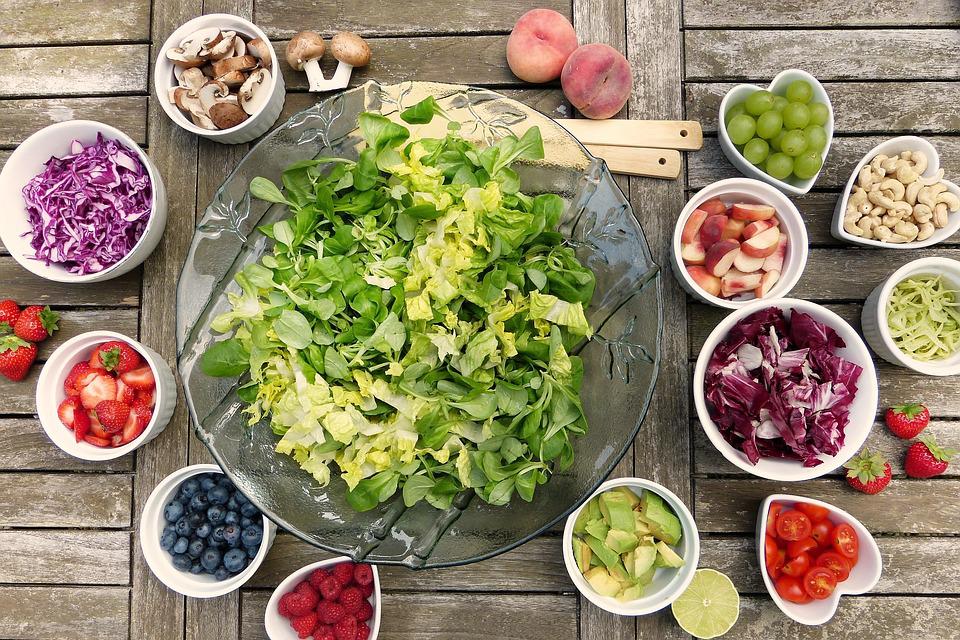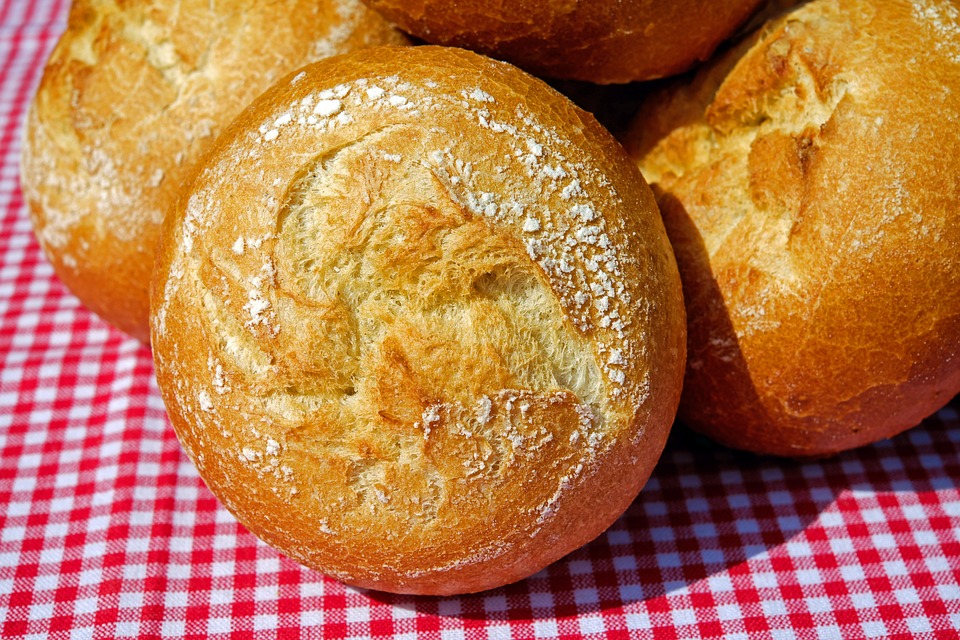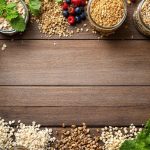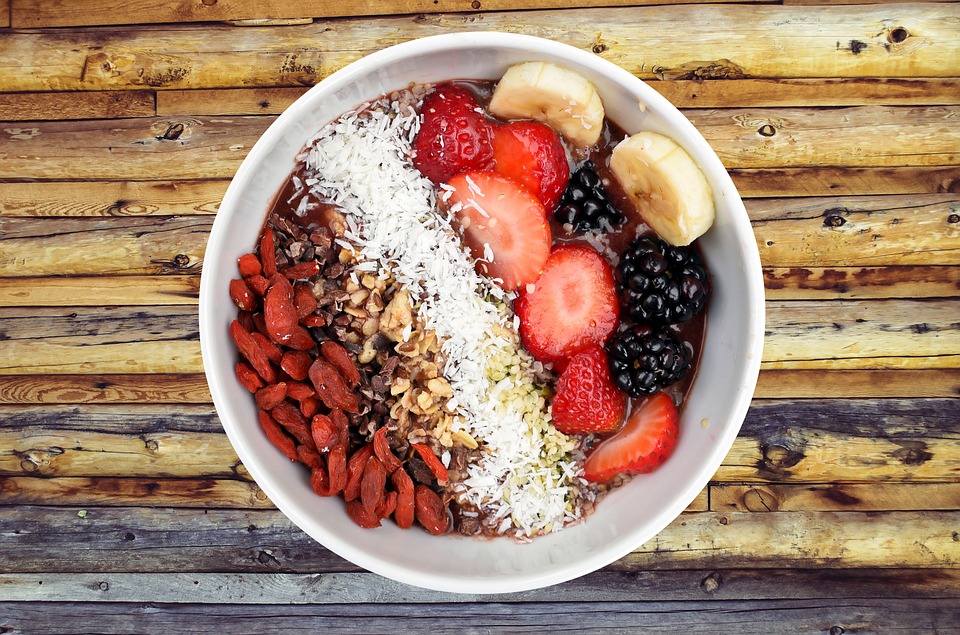
What is Dietary Fiber?
All fiber comes from plants, bushes, vines, or trees. There are many different types of fiber but the three that are most important to the health of the body are:
Insoluble Fiber
This fiber does not dissolve in water, but it does promote regularity in bowel activity. It does this by bulking up movements and stimulating the colon. Sources of insoluble fiber are:
- whole grain wheat and other whole grains
- corn bran, including popcorn, unflavored and unsweetened
- nuts and seeds
- potatoes and the skins from most fruits from trees such as apples, bananas, and avocados
- many green vegetables such as green beans, zucchini, celery, and cauliflower
- some fruit plants such as tomatoes and kiwi
Soluble Fiber
The bacteria in the colon break down these fibers to use them as food or nourishment. Soluble fiber is present to some degree in most edible plant foods, but the ones with the most soluble fiber include:
- legumes such as peas and most beans, including soybeans
- oats, rye, and barley
- many fruits such as berries, plums, apples, bananas, and pears
- certain vegetables such as broccoli and carrots
- most root vegetables
- psyllium husk supplement products
Prebiotic Soluble Fiber
Soluble plant fibers that were discovered relatively recently are called inulin or fructan. These soluble prebiotic fibers occur in significant amounts in:
- asparagus
- yams
- onions
- garlic
- bananas
- leeks
- agave
- chicory and other root vegetables such as Jerusalem artichokes
- wheat, rye, and barley (smaller amounts)
Benefits of a High Fiber Diet
Eating a high fiber diet on a regular basis has well-defined health benefits. What is now known regarding a high fiber diet includes:
Bowel Regularity
A diet containing a high amount of fiber leads to softer, bulkier, and more regular bowel movements, which reduces the likelihood of developing hemorrhoids, diverticulosis, and potentially colon cancer.
Cholesterol and Reduced Triglycerides
A regular intake of soluble fibers like psyllium husk and prebiotic soluble fiber can help reduce cholesterol levels and the incidence of coronary heart disease. Good sources of these soluble fibers include oats, flax seeds, and legumes or beans.
Colon Polyps and Cancer
The jury is still out on whether a high fiber diet helps to prevent colon cancer, although there is some evidence to suggest that it may. Certainly, eating a high fiber diet has the potential to increase regularity and speed the movement of carcinogens through the bowel, which could in turn reduce the risk of colon cancer. Additionally, reducing meat consumption has been found to reduce bile flow from the liver, which also has the potential to reduce the number of carcinogens that reach and are manufactured in the colon. Finally, a high fiber diet, including prebiotic soluble fiber, has been shown to increase the integrity and health of the colon wall, which could also reduces the risk of colon cancer.
Colon Wall Integrity
A diet with more fiber changes the bacterial makeup in the colon to a healthier balance. It is known that people who are obese, have diabetes type 2, or have inflammatory bowel disease have a higher number of bad bacteria in their colon. This can make the bowel wall weak and allow bacteria and toxins to pass through. A diet with more fiber, including some soluble fiber prebiotics, can help to return the bacterial makeup to a more positive balance.
Blood Sugar
Eating fiber can help regulate blood sugar levels and may reduce the risk of type 2 diabetes. Soluble fiber, which is found in beans, oats, and prebiotic fibers, slows the absorption of blood sugar. Insoluble fiber is also beneficial and should be consumed regularly.
Weight Loss
A diet consisting mostly of fiber-rich foods keeps you fuller longer and reduces hunger hormones produced in the gut wall, while increasing the hormones that create a sense of satiation. These hormones are produced in the gut wall.
A new study has found that the bacteria in the colon of overweight people is abnormal and causes them to absorb more calories than people of a normal weight. Prebiotic fibers may help to change this by restoring a normal balance of hormones.
Bacteria and the Function of the Colon
The colon is responsible for the final stage of digestion. Ideally, the waste products will move through the digestive system in a regular manner. Insoluble fibers help to facilitate this process by retaining water and creating a bulkier, softer stool, which is easy to pass.
The colon also provides a home for many micro-organisms, mostly bacteria. Recent research has shown that there are over 1,000 species of bacteria present, which is ten times the number of cells in the body. These bacteria play a role in keeping the colon wall healthy. In addition, these good bacteria produce a strong immune system for the body. They significantly increase calcium absorption and bone density. They provide other documented benefits. It is the soluble fibers in the diet that are effective in stimulating the growth of good colon bacteria.
22 High Fiber Foods You Should Eat
- Pears (3.1 grams)
On average, a medium-sized pear contains 5.5 grams of fiber, or 3.1 grams per 100 grams.
- Strawberries (2 grams)
One cup of strawberries has three grams of fiber, or two grams per 100 grams.
- Avocado (6.7 grams)
The avocado contains 10 grams of fiber per 1 cup serving, or 6.7 grams per 100 grams.
- Apples (2.4 grams)
A medium-sized, raw apple contains 4.4 grams of fiber, or 2.4 grams of fiber per 100 grams.
- Raspberries (6.5 grams)
One cup of raspberries contains 8 grams of fiber or 6.5 grams per 100 grams.
- Bananas (2.6 grams)
A medium sized banana has 3.1 grams of fiber or 2.6 grams per 100 grams.
Other high-fiber fruits:
Blueberries: 2.4 grams per 100-gram serving
Blackberries: 5.3 grams per 100-gram serving
- Carrots (2.8 grams)
The fiber content of raw carrots is 3.6 grams in 1 cup, or 2.8 grams per 100 grams.
- Beets (2.8 grams)
Beets contain 3.8 grams of fiber per cup, or 2.8 grams per 100 grams.
- Broccoli (2.6 grams)
The fiber content of a cup of this product is 2.4 grams, or 2.6 grams per 100 grams.
- Artichoke (5.4 grams)
1 raw globe or French artichoke has 6.9 grams of fiber, or 5.4 grams per 100 grams.
- Brussels sprouts (3.8 grams)
The average Brussels sprout has 3.3 grams of fiber per cup, or 3.7 grams per 100 grams.
Other high-fiber vegetables:
Kale: 3.6 grams
Spinach: 2.2 grams
Tomatoes: 1.2 grams
All values are given for raw vegetables.
- Lentils (7.3 grams)
A cup of cooked lentils contains 13.1 grams of fiber, or 7.3 grams per 100 grams.
- Kidney beans (6.8 grams)
The fiber content in beans is 12.2 grams per cup of cooked beans, or 6.8 grams per 100 grams.
- Split peas (8.3 grams)
There is 16.3 grams of fiber per cup of cooked split peas, and 8.3 grams per 100 grams.
- Chickpeas (7 grams)
A cup of cooked chickpeas contains 12.5 grams of fiber, or 7.6 grams per 100 grams.
Other high fiber legumes include:
Cooked black beans: 8.7 grams
Cooked edamame: 5.2 grams
Cooked lima beans: 7 grams
Baked beans: 5.5 grams
- Quinoa (2.8 grams)
One cup of cooked quinoa contains 5.2 grams of fiber, or 2.8 grams per 100 grams.
- Oats (10.1 grams)
Oats contain 16.5 grams of fiber per cup, or 10.1 grams per 100 grams.
- Popcorn (14.4 grams)
1.15 grams of fiber per cup of air-popped popcorn, or 14.4 grams per 100 grams.
Other grains that are high in fiber are nearly all whole grains.
- Almonds (13.3 grams)
There are 4 grams of fiber in 3 tablespoons, or 13.3 grams in 100 grams.
- Chia seeds (34.4 grams)
Chia seeds contain 9.75 grams of fiber per ounce, or 34.4 grams of fiber per 100 grams.
Other high-fiber nuts and seeds include:
Fresh coconut: 9 grams
Pistachios: 10 grams
Walnuts: 6.7 grams
Sunflower seeds: 11.1 grams
Pumpkin seeds: 6.5 grams
All values are for a 100-gram portion.
- Sweet potatoes (2.5 grams)
A medium-sized boiled sweet potato has 3.8 grams of fiber, or 2.5 grams per 100 grams.
- Dark chocolate (10.9 grams)
The fiber content in a 1-ounce piece of dark chocolate with 70-85% cacao is 3.1 grams. This amounts to 10.9 grams of fiber per 100 grams of dark chocolate.
Fiber Facts, Nuggets, and Pearls
- For breakfast, you can easily get the day started well by using a high-fiber, whole grain cereal. Check the labels. Add fruit such as blueberries and bananas. If you are an egg eater, use whole wheat or grain toast. Adding wheat germ gives you a good fiber kick.
- Always use whole grain or wheat with rolls and sandwiches. Does your fast food store not have them? Perhaps you look elsewhere. Eating an occasional black bean or veggie burger provides variety.
- Snacks should consist of fruit and/or nuts. While nuts are loaded with fiber, they are an energy-rich food, meaning they have a lot of calories in a small packet.
- Fruit juices should contain pulp. Clear juices such as clear orange, pear, or apple juice contain little fiber and have a lot of fructose. Prune juice is usually high in fiber.
- Homemade soups – adding fresh or frozen vegetables to a chicken or vegetable stock is a good way to start the homemade soup.
- Salads – adding cooked and then chilled vegetables provide great flavoring to almost any salad. Remember, a cobb salad has lots of cooked corn in it. Small slices of apples or oranges and nuts such as chopped walnuts or sliced almonds always add taste, variety, and fiber to almost any salad.
- Fruit – Try to eat fruit of some type with almost every meal.
- Rethink how you place the various foods on your dinner plate. Reducing the portions of meat or animal food portion to the side with equal or more portions of vegetables, legumes, and fruit portion always allows for more fiber. There was never anything magic about making the meat or animal food portion the main part of the dinner plate. Eating from smaller plates can, over time, trick your mind and long-term habit of using a dinner plate. Again, there is nothing magic in an 11, 12, or 13-inch dinner plate.
Fiber Supplements
be sure to check with your doctor before starting any supplement There are many fiber supplements that you can find on shelves at the grocery store or pharmacy. However, you should always check with your doctor before starting any type of supplement.
Psyllium
Psyllium is a soluble plant fiber that has been used in India for over 2,000 years. It is a soluble fiber with mucilage in it, which retains a lot of water and is also fermented by colon bacteria. When 7 grams a day are used, it does lower cholesterol. Metamucil in various forms is psyllium.
Methyl Cellulose
Cellulose products are generated from wood chips that have been ground down into a fine powder. The powder is then treated in different ways, such as being boiled in acids. Methyl cellulose is a type of insoluble fiber that does not dissolve in water; however, it is an emulsifier, which means it can blend oils and water together. Citrucel is an example of a product that contains methyl cellulose. Although methyl cellulose is generally considered safe, there is some evidence to suggest that it may not be appropriate for people with Crohn’s disease or ulcerative colitis. Several medical studies have shown that emulsifiers like methyl cellulose can dissolve the mucous lining of the colon in animals that are prone to Crohn’s disease. This allows bacteria to invade the underlying tissue.
Inulin
Inulin is a prebiotic fiber that is soluble and found in many foods. It is mostly fermented on the left side of the colon. Generic inulin and Fiber Choice are available as supplements.
How Much is Enough?
The amount of fiber in food is measured in grams, and national nutritional authorities recommend consuming a certain amount of dietary fiber each day.
Under Age 50
Men – 38 grams
Women – 25 grams
Over Age 50
Men – 30 grams
Women – 21 grams
For a week or so, it is best to track the amount of fiber you are consuming by looking at the nutrition label on boxed and packaged foods.

